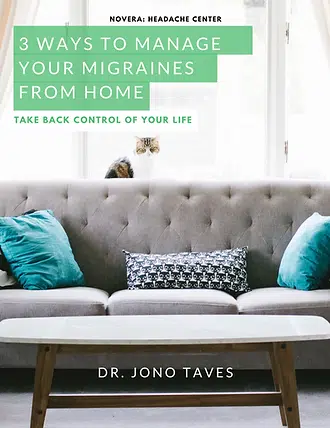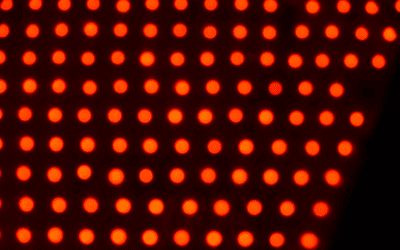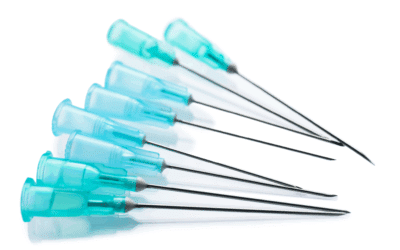Here at Novera: Headache Center, we work with patients who have many different types of diagnoses and presentations that accompany their headaches and migraine pain. Vestibular migraines in particular can be a confusing and scary diagnosis to navigate, and traditional approaches to this condition have left people feeling hopeless and lost. With all the information out there, our goal is to provide you with a clearer picture of what a vestibular migraine is, why it occurs, and how we treat it here in the clinic. Keep reading for a deep dive into what this diagnosis entails.
Symptoms/Classification
Traditional migraines:
- Headache
- Nausea
- Vomiting
- Sensitivity to light or sound
- Visual changes
- Numbness or tingling in the hands or face
Vestibular migraines:
Any of the above symptoms, plus:
- Vertigo (dizziness), usually lasting minutes to hours, but sometimes days
- Unsteadiness and loss of balance
- Sensitivity to motion
- Sensitivity to noise
- Some people also experience ear ringing or feelings of ear fullness
With a vestibular migraine, the person may experience a combination of vestibular attacks, visual aura, or sensitivity to visual stimulation and motion at different times. They can also occur with or without an actual headache, which is a point that can create some uncertainty when looking to get a solid diagnosis. Oftentimes, these kinds of migraines are triggered by motion (like a moving car or even a movie), busy or overly stimulating environments (like shopping in a crowded store), or even high-contrast visuals (like flashing lights or a patterned shirt). With that being said, other traditional migraine triggers may be exacerbating your symptoms as well. This may include alcohol, stress, dehydration, poor sleep habits, or even certain types of food. Because some of these triggers can be extremely hard to avoid, living with vestibular migraines can have a huge impact on your quality of life and ability to maintain your home, go to work, drive, or even take a walk down a busy street.
There is a distinct difference between vestibular migraine vertigo and ‘ear crystal’ vertigo. Oftentimes, that ‘ear crystal’ vertigo is triggered by movement and you may experience short bouts of a spinning sensation that ranges anywhere from 30 seconds to a couple of minutes. With a vestibular migraine, on the other hand, symptoms may last 5 minutes or even a few days. It is often accompanied by headaches, visual auras, light and sound sensitivity, or any of the other previously mentioned migraine symptoms.
This condition can also be confused with Méniére’s disease or even a mini-stroke. Distinguishing a vestibular migraine from Méniére’s disease is a big challenge within the medical community due to a lack of definitive criteria or diagnostic tests. A diagnosis is usually determined based on clinical presentation, despite having much overlap between the conditions. With Méniére’s disease, the onset is usually later in life, there may be an abnormal nystagmus (that quick, jerky eye movement seen in some vestibular disorders), and more symptoms related to the ears such as tinnitus, feelings of fullness, and even hearing loss. Vestibular migraines, on the other hand, tend to present with more light sensitivity, headaches, and auras.
Patients will often bounce from provider to provider, seeing primary physicians, neurologists, and ENTs with very few clear answers. We understand how in some cases, it may feel like your provider is trying anything and everything and hoping that something sticks. Often, the goal is to manage symptoms so you can get on with your day, but these treatments don’t always address the actual root of the problem. Traditional treatment for vestibular migraine includes antihistamines, anti-nausea medications, and beta-blockers, all of which can lead to drowsiness, making it hard to go about your day. Commonly prescribed migraine medications are often not very effective when it comes to vestibular migraines due to the lack of head pain, which is what those drugs tend to target. While we believe these medications have a time and place and that they may work very well for some patients, this is not the case for all. We also understand not wanting to be dependent on medications for the rest of your life in order to simply do the things you need to or do the things you love. This is why we take a bit of a different approach when it comes to tackling vestibular migraines.
How We Treat It
After ruling out more ‘traditional’ causes of dizziness such as BPPV, Méniére’s disease, vestibular neuritis, or POTS, we look to the neck and the vagus nerve. In our practice, we have found success through this approach as studies have found a couple of interesting connections that relate to vestibular migraines and the upper joints in the neck. There are a multitude of neural connections between the sensory systems, which process head pain, and the vestibular systems, which establish a sense of spatial awareness and balance, that communicate during a migraine attack. These sensory and vestibular systems feed through the upper part of the neck (C1 and C2) so it makes sense that dysfunction and restriction in these areas could lead to confusion of pain and processing signals – leading to a vestibular migraine! What we often find with our patients is that these areas, once provided the care to move in a less restricted manner, significantly reduce the severity and frequency of their symptoms…all without medication. This just goes to show how important it is to look at the neck when dealing with migraines, despite being frequently overlooked.
There is also new research emerging, correlating the vagus nerve to the vestibular system. The vagus nerve controls many functions within the body, but for the purpose of this article, let’s review its importance to the vestibular system. The vagus nerve has an auricular branch that supplies sensory innervation to the ear, including the canal, tragus, and auricle. Not only this, but it also regulates things such as heart rate and blood pressure. As the body is taking in information from the world around us, the vagus nerve regulates how we respond from a psychological standpoint. Because of its close proximity to the vestibular system, recent studies suggest there may be neural connections between the two parts. When we address vestibular migraines, it’s important to take into consideration this potential connection during treatment so we can approach care from a holistic perspective.
We treat the neck and vagus nerve using a few different approaches:
- Manual physical therapy aimed at reducing restriction in the upper neck, jaw, and shoulders
- Home exercises designed to improve ‘slide and glide’ of the joints surrounding sensory nerves
- Noninvasive electrical stimulation to the vagus nerve through a device called the GammaCore
When we improve mobility by reducing the restriction of the soft tissue and joints surrounding the neck, it allows for decreased pain signals and an improved sense of where your head and neck are when compared to the rest of the body. By improving the quality of signals sent from your neck to your brain, we see our patients gain significant relief from their vestibular migraine symptoms.
If you or someone you know has been diagnosed with vestibular migraine and you are searching for answers, know that there is hope! Reach out to our clinic, we will be happy to talk with you about treatment options. In the meantime, check out our podcast episode on vestibular migraine for a more in-depth discussion on this diagnosis.




